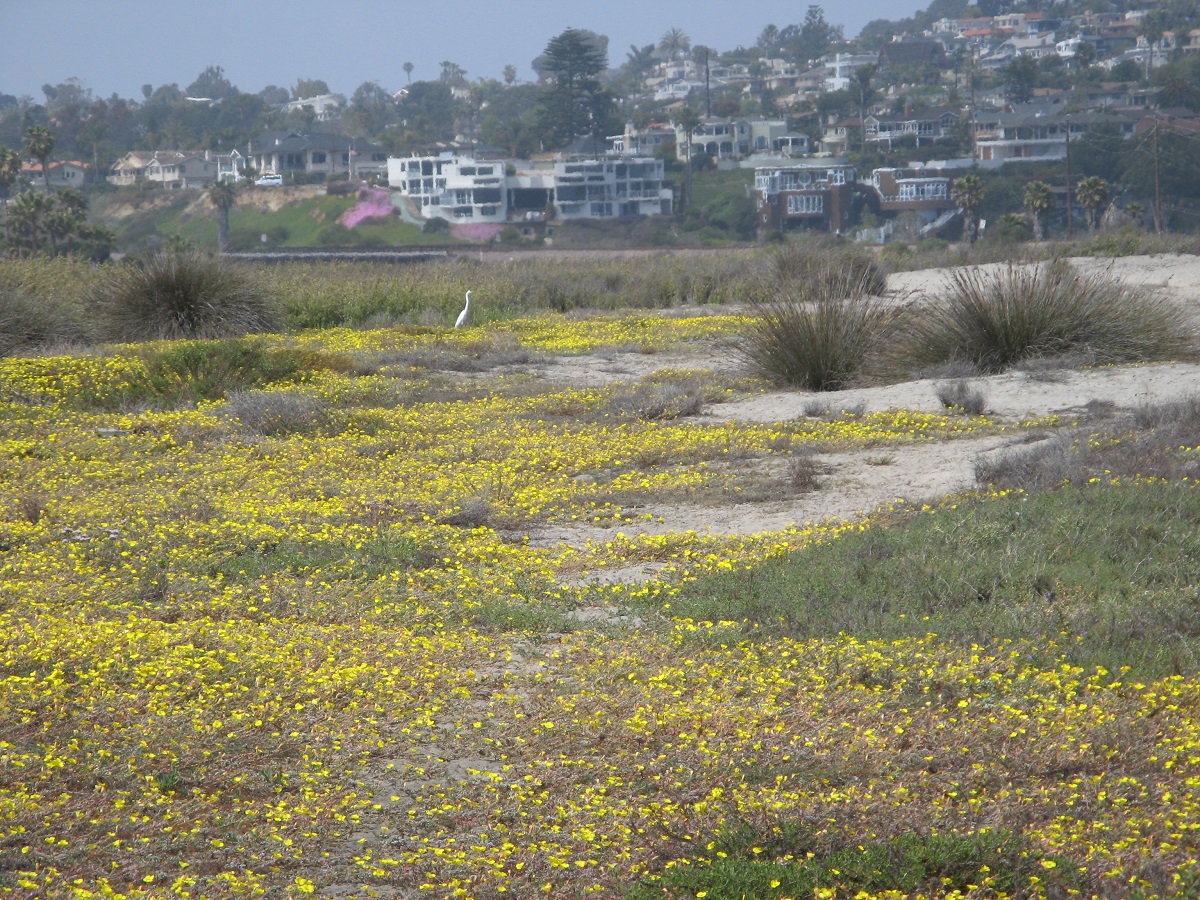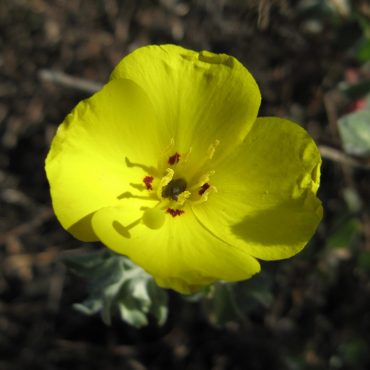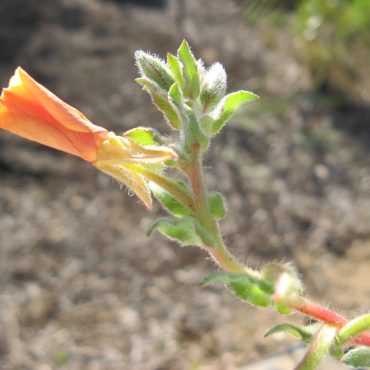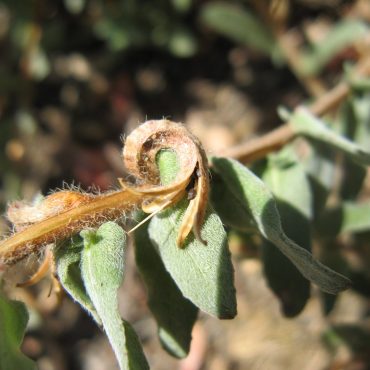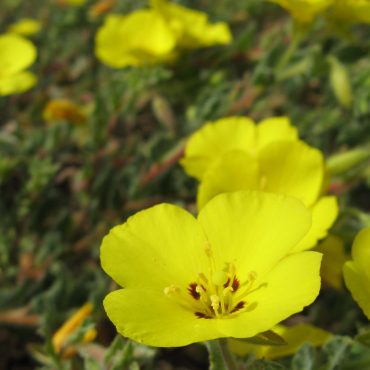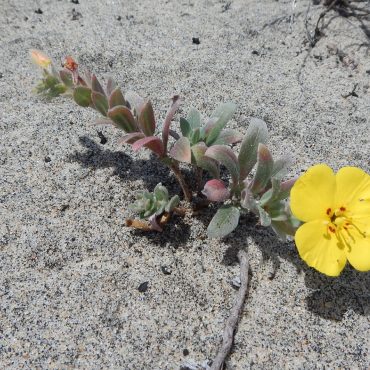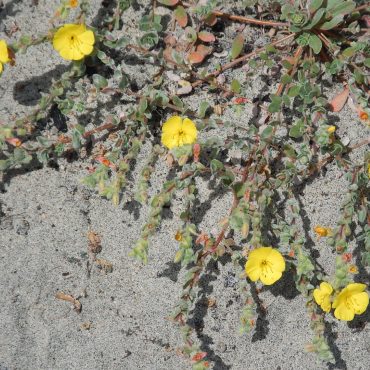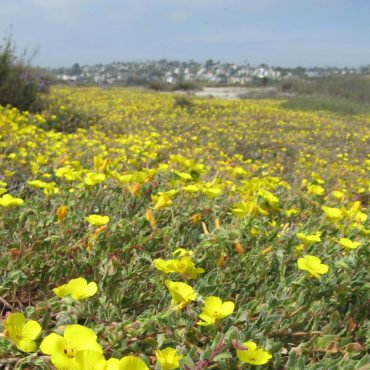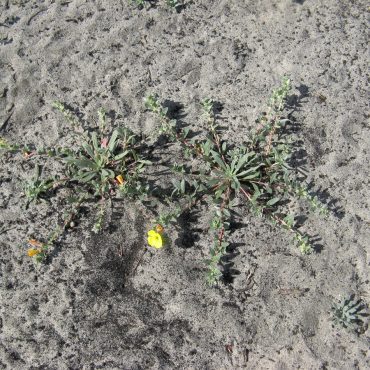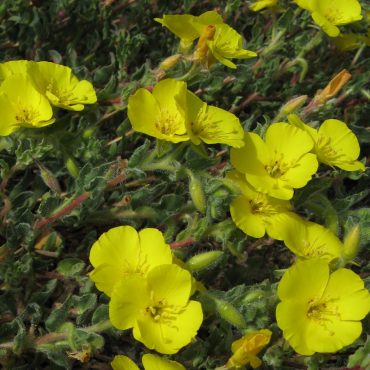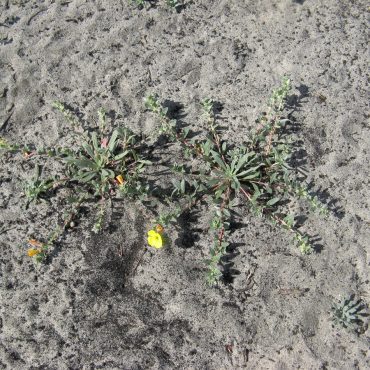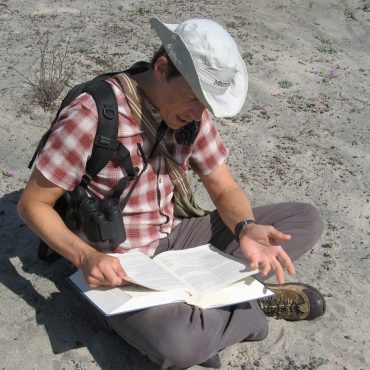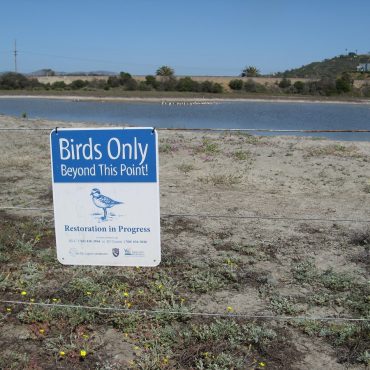Classification
Beach primrose is a dicot angiosperm, which, in spite of its common name, is not a member of the primrose family (Primulaceae) but the evening primrose family (Onagraceae).2
Plants in the evening primrose family are characterized by radial, bisexual flowers with parts in multiples of four (4 petals, 4 sepalsand 8 stamens).2,11,59,143 Other members of this family found in the Reserve include the delicate canyon clarkia (Clarkiaepilobioides) and the robust Hooker’s evening primrose (Oenothera elata ssp. hirsutissima).
Beach primrose was originally placed in the genus Oenothera. Along with several other species, they were moved into a new genus, Camissonia, on the basis of the structure of the stigma, which is spherical in Camissonia and X-shaped in Oenothera, and also by the fact that flowers of Camissonia open in daytime, rather than evening.59 Recently Camissonia was further split and beach primrose was moved to Camissoniopsis.
Two other species of Camissoniopsis have been reported from the Reserve: California suncup (C. bistorta) and Lewis’ evening primrose (C. lewisii).48
Two subspecies have been described for C. cheiranthifolia.2,7 Ours is ssp. suffruticosa.48 The second, ssp. cheiranthifolia, has smaller flowers, a shorter style with the stigma surrounded by anthers, and a distribution both north and south of the range of ssp.suffruticosa. The divergence of ssp. cheiranthifolia from ssp. suffruticosa is thought to have been associated with a change in pollination from insect-pollination (in ssp. suffruticosa) to self-pollination (in ssp. cheiranthifolia).163,164 This differentiation was accompanied by a change in flower morphology. Flowers of ssp. cheiranthifolia are smaller and paler, making them less visible to pollinators; the stigma is surrounded by the anthers, which facilitates self-pollination. It is postulated that the beach environments of ssp. cheiranthifolia may be more variable and/or more extreme, making insects less reliable as pollinators.
Jepson eFlora Taxon Page

